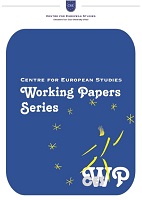
EXPLORING THE FORMAL AND INFORMAL INSTITUTIONS AS A KEY TOOL FOR ENHANCING ECONOMIC RESILIENCE
Despite the fact that there have been many institutional studies over the past two decades and the role of institutions in economic life is extremely high, we could state that modern economic theory of institutions is in its infancy. Institutions organize the relationship between people as well as determine and limit the set of alternatives in the economic behavior. This paper aims to investigate and to understand the impact that formal and informal institutions induce on the broader growth of economic resilience capacity and the development outcomes as well as to consider ways of prospect measuring of this institutional approach. Content analysis of fundamental research papers on the issue of resilience and institutional theories has been carried out. According to the result, we state that formal and informal institutions retain their backbone role, even under strong external influences. Also, the long-term differences in the functioning of economic systems are shaped by a very deep influence of institutions.
More...